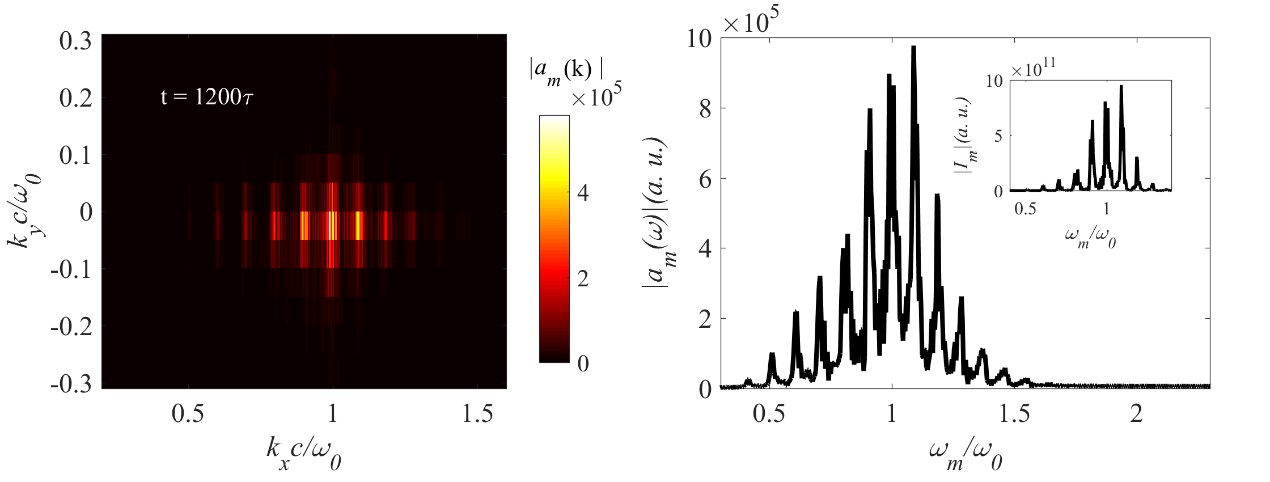Broadband high-power intense lasers are expected to have many characteristic applications in incoherent laser acceleration, THz radiation generation, and parametric instability suppression. However, normal optical components fail to directly modulate high-power intense lasers due to their low damage threshold. Therefore, an achievable scheme for the generation of broadband high-power lasers is critical to inertial confinement fusion and other frontier domains.
Recently, the research team from Shanghai Institute of Optics and Fine Mechanics, Chinese Academy of Sciences, proposed a scheme that high-power intense lasers can be self-modulated in the propagation in the tenuous plasmas. The pump laser required here is achievable in worldwide laser facilities, such as ShenguangII Update Facility. The result was published in Optics Express.
In their experiment, the peak intensity of pump laser was around 1018W/cm2, which was not in the high relativistic regime. Tenuous plasma and sub-relativistic laser used here were mainly to generate large numbers of hot electrons with temperature in the range [0.1, 5.11]MeV. Backward stimulated Raman scattering (BSRS) could be suppressed via large Landau damping, and forward stimulated Raman scattering (FSRS) was the dominant instability mode in this regime.
Sidebands of pump laser were generated via Stokes and anti-Stokes processes of FSRS, and subsequently were broadened via forward stimulated Raman rescattering.
They found that each Stokes or anti-Stokes mode could generate its own sidebands via FSRS until the rescatter was saturated by the weakened mode intensity. The high-power sub-relativistic laser pulse could be self-modulated to a broad bandwidth over 100% with energy conversion efficiency around 90%.
These broadband high-power intense lasers are expected to be applied in some new ignition schemes.

The spectrum of self-modulated high-power intense laser in vacuum. (Image by SIOM)
Article website:
https://www.osapublishing.org/oe/abstract.cfm?uri=oe-28-11-15794
Contact:
Dr. CAO Yong
Shanghai Institute of Optics and Fine Mechanics
Email: caoyong@siom.ac.cn